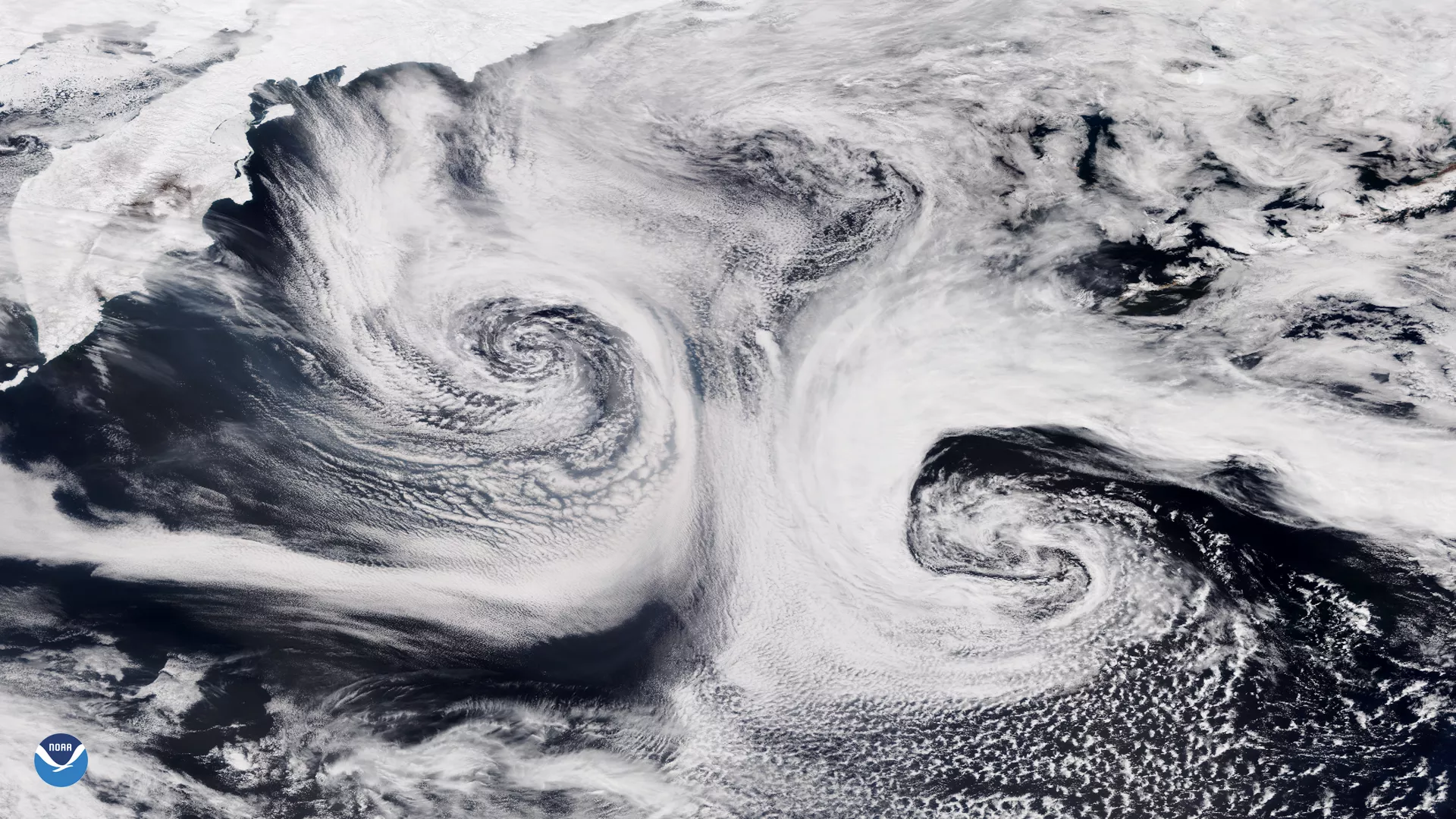
On Monday, April 20, 2020, the NOAA-20 satellite captured this stunning imagery of two mid-latitude cyclones swirling over the northern Pacific Ocean.
“The North Pacific is quite stormy,” said Darin Figurskey, Operations Branch Chief of NOAA’s National Weather Service (NWS) Ocean Prediction Center. He explained how multiple storms like these are relatively common in this area, especially in the winter and spring. “There are many instances where large lows will generate a series of other lows along triple points of fronts ,” he said, referring to where a warm front, cold front, and occluded front intersect. “And new spin-ups from vorticity maxima, [areas of ascending circulation], may occur around the former primary system.”
Image loop of the two cyclones, captured by GOES-West on April 20, 2020
Looking at data and forecast models, NWS Meteorologist Outreach Specialist Brian Jackson said that these two likely formed when very fast winds of a shortwave jet max cut through the base of a larger area of relatively low atmospheric pressure, which is known as a trough. “This probably kicked off the second storm to wind up as the first one [to the east] occludes and weakens,” Jackson added.
The still image above was captured by the NOAA-20 satellite's VIIRS instrument , which scans the entire Earth twice per day at a 750-meter resolution. Multiple visible and infrared channels allow it to detect everything from clouds to atmospheric aerosols, such as dust, smoke and haze associated with industrial pollution and fires. The polar-orbiting satellite circles the globe 14 times daily and captures a complete daytime view of our planet once every 24 hours.
The animated image was taken by the GOES-West satellite, also known as GOES-17. It provides geostationary satellite coverage of the Pacific Ocean, from the east coast of Australia to the west coast of the United States. First launched in March 2018, the satellite became fully operational in February 2019.
